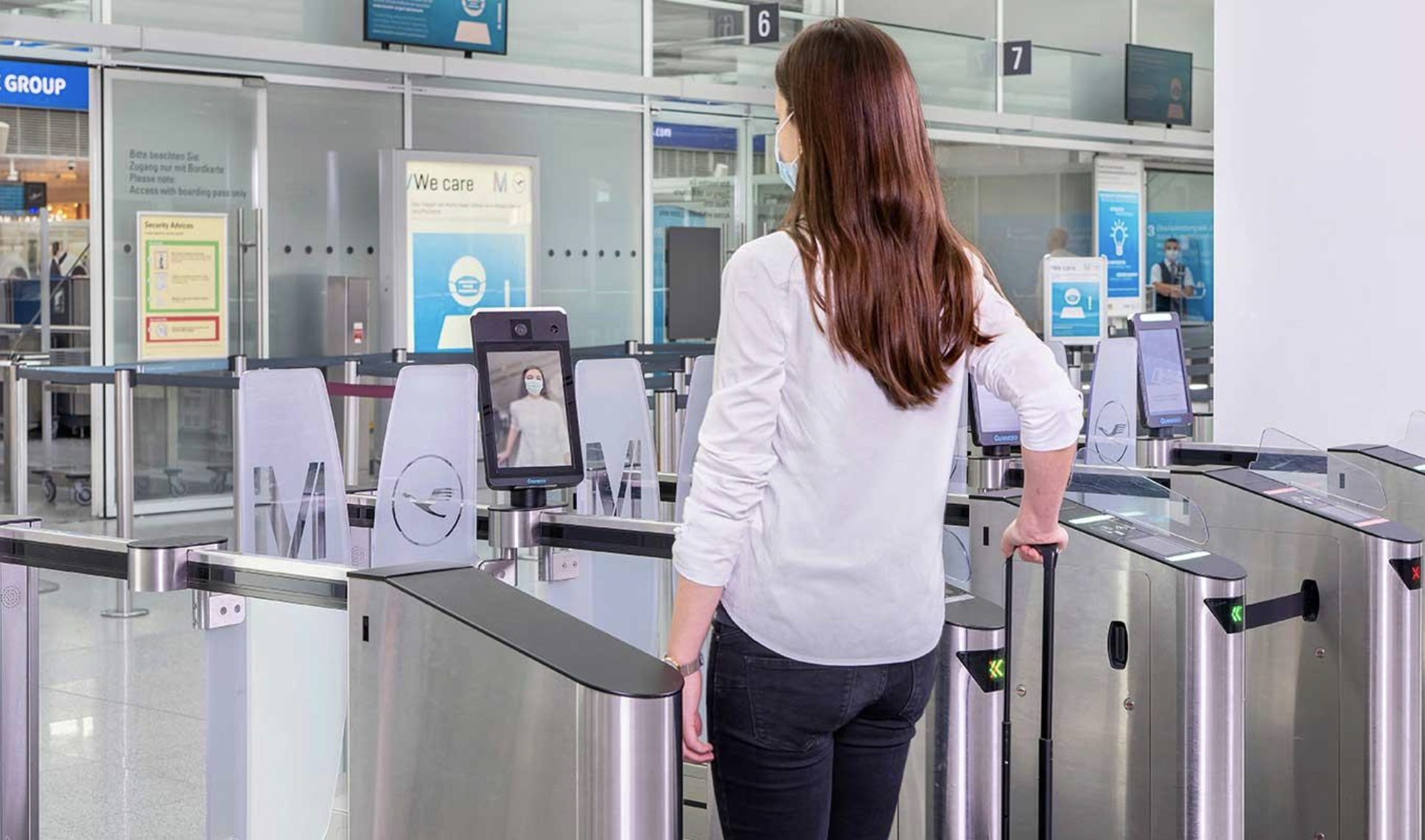Identity Review | Global Tech Think Tank
Keep up with the digital identity landscape.
Airport security is changing again. The global number of flights dropped 80% from pre-COVID levels in April 2020, and analysts are projecting the industry may not fully recover from the virus shock until 2023.
Amidst a challenging macro environment, airports and airlines are searching for all possible means of reducing the spread of COVID-19 and jumpstarting the travel industry. A recent Deloitte report noted the speed with which the entire industry is working to modernize its practices: “Social distancing, masks and the current COVID-19 pandemic are creating a sense of urgency and a call for immediate action—quick remedies for contactless environments and technologies that secure and safeguard our travelers and airport employees and vendors.”
Increased implementation of biometrics is one avenue airports and airlines are pursuing to ensure contactless onboarding and control the flow of passengers within the airport.
Star Alliance is leading the change in what could potentially be a transformative move in the industry, rolling out pilot programs that will test its biometric platforms with both Lufthansa and Swiss Airlines at two German airports. As is the case for most existing biometrics identification programs in airports, the program will be opt-in. However, unlike CLEAR software that is used at 30 airports in the US, Star Alliance will identify passengers at both the security checkpoints and boarding gates. Star Alliance’s software can also identify passengers without requiring them to remove their masks.

A passenger with a mask using Star Alliance to check-in (Source: Munich Airport)
Passengers can use Star Alliance by simply enrolling through their airline’s mobile app and uploading a selfie. Star Alliance then matches the selfie image to the passenger’s real-time image at the security checkpoint.

A Star Alliance check-in (Source: Lufthansa)
At the gate, the software works slightly differently. This time, the identity match occurs through NEC I:Delight software on kiosks and the passengers’ biometric information is encrypted and stored in the cloud. All data storage complies with EU privacy laws, and passengers can choose to delete their biometric identity whenever they choose.
In the report announcing Star Alliance’s pilot program with Lufthansa and Swiss Airlines, APEX notes that Frankfurt, one of the German airports using the new biometric system, “has plans to extend it to other passenger processing zones, including baggage drop-off, in the near future.”
Prior to COVID-19, biometric systems like CLEAR only had utility as a potential replacement for the slow, inefficient security apparatus put in place after the 9/11 attacks. However, passengers can now spread a deadly virus to fellow travelers at any point in the airport, meaning that security lines, baggage check, baggage claim, heavily-trafficked hallways to gates and other areas must be controlled and monitored by airports.
Lufthansa is excited about the potential for biometrics to improve security and the customer experience in airports.
“Biometrics will become increasingly important to the future of travel. Especially during the pandemic, these touchless processes are a big plus,” said Christina Foerster, executive board member at Lufthansa Group in an interview with APEX. Frankfurt Airport executive Pierre Dominique Prümm, meanwhile, told APEX that “biometric processes offer our customers numerous advantages in terms of comfort, security and reduced waiting time.”
However, despite these positive reviews from Star Alliance’s early clients, many privacy-related questions remain concerning the increased use of biometrics within the travel industry. Some passengers are uncomfortable with the idea of facial recognition in airports and worry that airports are monitoring their location outside of just security and gate check-ins.
Through opt-in features, compliance with EU regulations, and allowing consumers to delete their biometric information, Star Alliance has attempted to preemptively address these privacy concerns. As biometrics become more prevalent within airports, however, expect the tension between privacy, convenience and security to increase in the years to come.
ABOUT THE WRITER
Quinn Barry is a Tech Innovation Fellow from Stanford University covering innovations in digital privacy across finance and government.